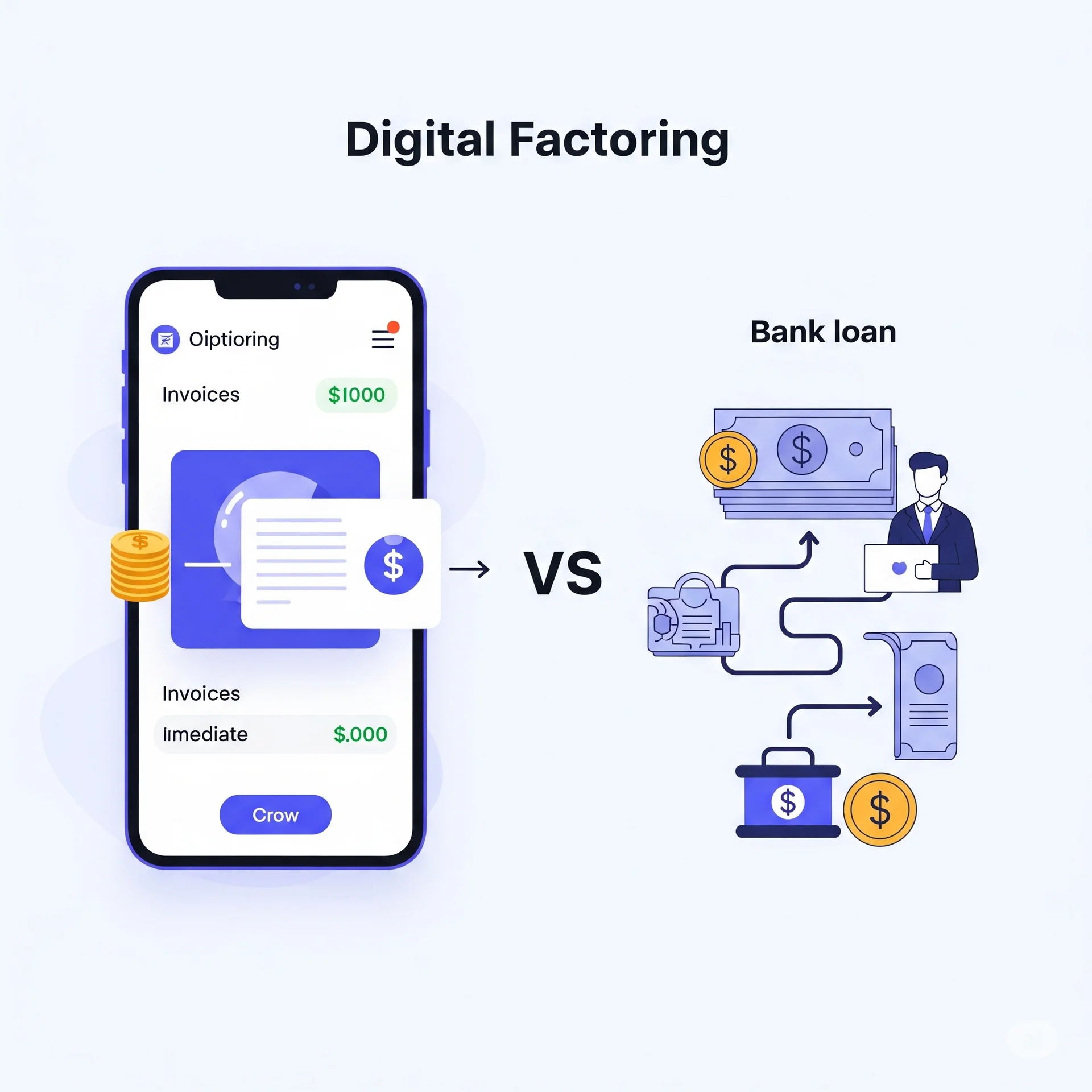
Finance
Financial Cybersecurity: Protecting Your Company's Most Valuable Assets
Cybercrime poses a formidable threat to businesses in the digital age. For the accounting professional, the protection o...

A bank loan, whether it’s a line of credit, a working capital loan, or a commercial loan, is based on the granting of a sum of money by a financial institution to a company. This operation generates debt for the company, which commits to repaying the borrowed capital along with interest over a determined period.
Debt Generation: The capital received is recorded as a liability on the company’s balance sheet. Solvency Analysis: The bank evaluates the repayment capacity of the applicant company, its credit history, and its guarantees. The process is usually slower and requires more documentation. Fixed Interest and Terms: Payments are scheduled in regular installments that include principal and interest, regardless of incoming cash flows from invoicing. Guarantees: Real guarantees (mortgages, pledges) or personal guarantees are often required to back the operation. Impact on Borrowing Capacity: A traditional loan consumes part of the company’s borrowing capacity, which could limit access to future financing.
On the other hand, factoring, and its evolution towards digital factoring, is not a debt, but a transfer of the right to collect invoices to a factoring company (factor). In essence, the company sells its accounts receivable (invoices) to this entity, obtaining immediate liquidity.
No Debt Generation: By selling an account receivable, it ceases to be an asset of the company and, therefore, is not recorded as debt. This improves debt ratios. Focus on the Debtor (Client): The risk assessment is mainly focused on the solvency of the client who owes the invoice, and not so much on the transferring company. This facilitates access for SMEs with limited credit history. Immediate Liquidity: The company obtains a percentage of the invoice’s value (usually between 80% and 95%) in a very short time, sometimes in hours, which is critical for cash flow. Service Fee: Instead of interest, the factor charges a commission that includes the cost of the advance and, in many cases, the management of collections and the assumption of the risk of non-payment (in “non-recourse” factoring). Resource Liberation: The company is relieved of the collection management of those invoices, freeing up administrative resources. The Digital Transformation: “Digital factoring” enhances these benefits by simplifying and speeding up the process through online platforms. Evaluation, approval, and disbursement are carried out telematically, significantly reducing times and bureaucracy. This makes it especially attractive in the current context of immediacy and efficiency.
Imagine an engineering services company that has completed a project for a large client, issuing an invoice for $10,000,000 with a 90-day payment term. It needs that capital to pay salaries and buy materials for a new project.
With a Loan: The company could apply for a loan, which would add $10,000,000 (or more) to its liabilities, affecting its debt ratio. It would have to wait for approval (weeks) and start making fixed payments every month, even before collecting the invoice from its client. With Digital Factoring: The company could upload the invoice to a digital factoring platform. Within hours, it would receive approximately $9,000,000. The factoring company would be responsible for collecting the $10,000,000 from the client in 90 days. The engineering company does not have a new debt, its balance sheet remains “clean,” and it gets the liquidity it needs instantly, paying a commission for the service.
While a bank loan is a useful tool for long-term investments or consolidating capital, digital factoring is positioned as an agile and strategic solution for short-term liquidity management, optimizing cash flow without increasing debt. Understanding this fundamental difference is crucial for any professional or company looking to maximize its financial efficiency and ensure its continuous operation in an increasingly demanding business environment.
Is your company using the right financing tool for each operational need?